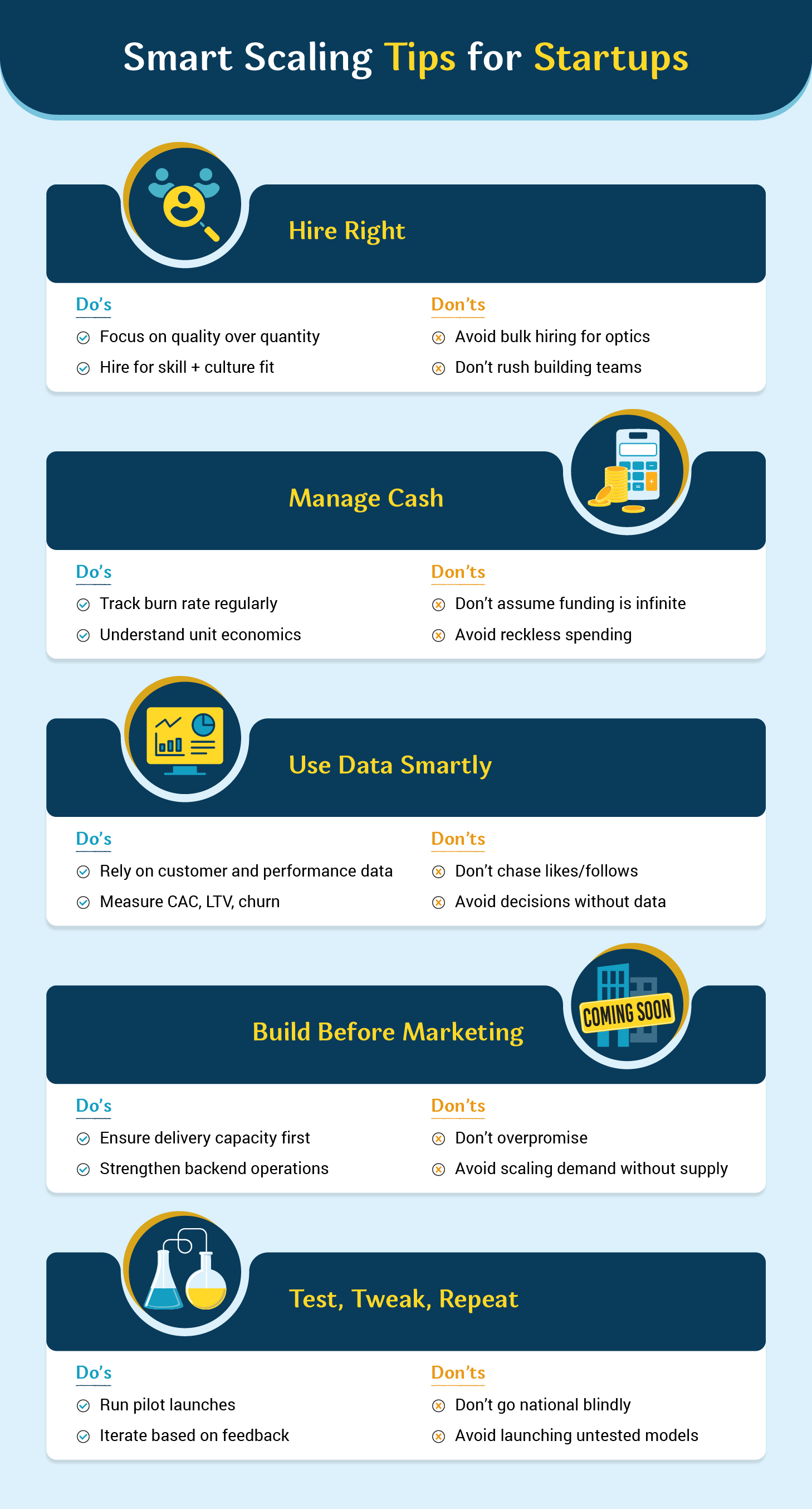Have you just raised your first round of funding or hit your 100th customer and think it's time to floor the accelerator? If so, wait - before you jump the gun, it is wise to take a step back.
Have you recently come across the big word ‘blitz scale’, and felt like it is going to make you the next unicorn in the making? Then, you should know why it is not always the right company growth strategy. Capturing the market needs a smarter and more sustainable approach.
Let’s explore why blitzscaling isn’t always the better bet.
What is blitzscaling and what is so special about it?
Blitzscaling, a term that sounds more like a superhero, was popularised by Reid Hoffman (of LinkedIn fame). It denotes a strategy where speed is the driver and not efficiency, especially in the business world.
Imagine this: You are the owner of a small vada pav stall outside a busy Mumbai railway station. Your chutney-spice ratio is flawless and the customers drool over the potato mix and the soft pav. Great going! After a few months, you are naturally thinking of opening 50 more stalls in the next few weeks across the country. The excitement is palpable, but hold on - do you have the staff to expand so fast? Does your potato supplier have the capacity to handle the impromptu surge in demand? Even if you consider other suppliers, are they ready to work on credit? These are crucial questions before the next big leap.
That’s what blitzscaling is. It’s about rapid growth—explosive, exciting, and risky. It sounds glamorous but might not always be the right move. For many, scaling business sustainably is a smarter, steadier way.
Why do people love blitzscaling?
- Growth potential: It is one of the fastest ways to capture the market
- Attractive funding: It is also one of the most powerful tools to attract big investments
- Achieving milestones: Your brand may become an overnight success
But here's the hitch.
Hypergrowth pitfalls
- Faster burn: The speed at which a company spends its available cash or capital to cover expenses like salaries, rent, marketing, product development, etc., will become way higher than the revenue.
- Dipping customer experience: Maintaining the standards that initially attracted customers can suffer when scaling prioritises speed over quality. Service efficiency, product consistency, and customer support often take a hit, leading to dissatisfaction and loss of trust.
- Things start going out of hand fast: The neck-breaking speed of growth can throw your operations out of control. Everything else starts to fly out of the window - company culture, work ethics, brand values, mission, vision, and so on.
Smart scaling tips
Smart scaling strategies can pave the way for long-term business growth. Here are some tips to achieve this:

When blitzscaling backfires: Fictional startup fails
Here are some fictional failed startup stories that highlight key business scaling mistakes to avoid.
|
#Case study 1: With no operational infrastructure, scaling costs the business. A company that originated as a food delivery startup was backed by powerful ideas and strong funding. It expanded to 11 cities at lightning speed, but then the cracks started to appear. The backend operations just could not keep up, logistics were messed up, and employees were fired. This resulted in missed, delayed, and botched orders, leading to customer dissatisfaction. |
|
#Case study 2: Growth with zero profitability is not an ideal scenario A vacation rental company was on an expansion spree. There was no clear unit economics, no sustainable models or backups. Eventually, the company could not survive the market dynamics and had to close. |
|
#Case study 3: Lack of shared vision, team alignment, and cultural cracks. An exclusive platform created for the Indian real estate sector witnessed volatile conditions, even though it started with big funding and strong marketing campaigns. However, over-hiring led to cultural clashes and soon there was a lack of focus, resulting in an implosion. |
Why do sustainable growth strategies win?
The beauty of sustainable business growth is that it does not make headlines overnight, but it lays the foundation for brands that last and win in the long run. There are reasons why scaling the right way wins:
- Focus on profits: Sustainability is not about superficial things, for example number of social media likes or app downloads. The priority is profitability and long-term survival.
- Customer experience first: Unless and until you make customer satisfaction and user experience your priority, success can be short-lived. That is why sustainable growth encompasses the ‘customer is the king’ motto. Long-term survival comes with consistent service and offering genuine value to customers.
- Long-term viability: While there is no sure-shot masala strategy for growth, it has been seen that going slow ‘one step at a time’ really helps. Startups that scale responsibly have lesser risks of crashing during downturns.
- Resilience to market shocks: Companies that make their foundations strong before going all out for scaling are likely to weather storms better, be it a pandemic, economic slumps, global crisis, competitive market conditions, or government policy changes.
- Stakeholder trust: External and internal stakeholders tend to trust startups that demonstrate consistent, steady growth over time rather than those with rapid but erratic achievements.
Conclusion
Growth is significant - it feels exciting and perfect. However, should it be through blitzscaling or a sustainable approach? The answer is- to let growth come at the right time, in the correct size.
Blitzscaling might work for global unicorns, but for most startups and small businesses in India, the rush to the finish line often ends in a dead end. Rather, companies that follow sustainable scaling strategies usually win the race.



















